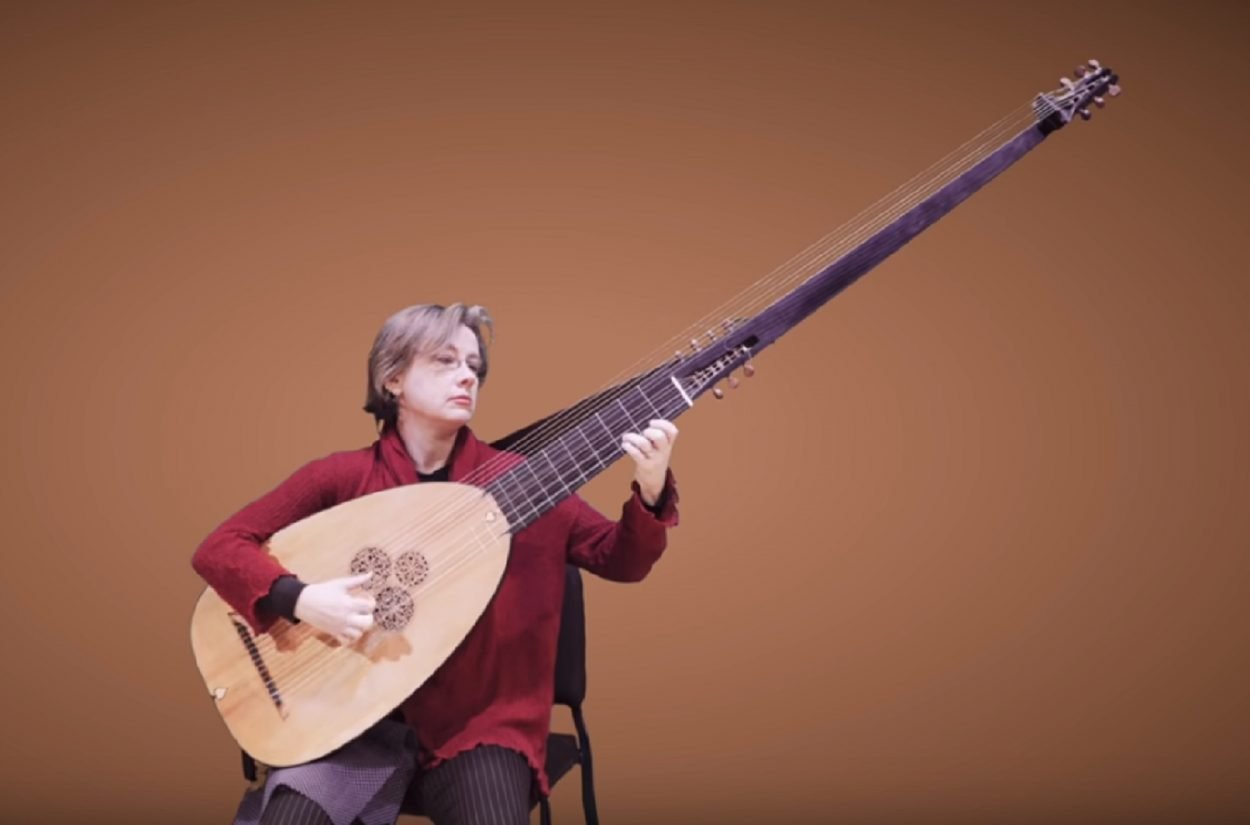Designed to emanate the music of the spheres, for opera, and also allow improvisation, this Baroque-era member of the lute family has has a hugely extended neck, second pegbox, large volume with ornate sound holes, and wide range with harmonic options. It was designed to play in opera as well as Turkish-influenced music, and, like the more regular lute it has a hollow sound box with curved back and a wooden top. One of its inventors was Italian composer Alessandro Piccinini, who also referred to it as an arch lute. Related to the Italian liuto attiorbato, the French théorbe des pièces, the archlute, the German baroque lute, and the angélique or angelica, it is the extended neck and wide range which makes it truly stand out, allowing it to to play basso continuo accompaniment parts as well as being a solo instrument. Also known as the chitarrone and tiorba, It was used in early 1600s by composer Giulio Caccini in his two collections, Le nuove musiche (1602 and 1614) and Claudio Monteverdi in his 1607 opera L'Orfeo. Modern experimental composers who have also written for and played the theorbo include Scott Fields, Stephen Goss and Roman Turovsky.
But let’s hear it in action with its rich tone. Lutenist Elizabeth Kenny, courtesy of the Orchestra of the Age of Enlightenment, introduces with great panache the basics of the instrument, and how opera required a louder instrument, its inventors, unconventional but very useful tunings, and also its co-existence as a serious and eccentric instrument.
James Akers also looks more into its range and unique sound, with the bottom range going below that of the double bass, but with a much smaller body, and is joined by other players:
An illustration of tuning
With further range and expression, here’s a short recital by Jonas Nordberg playing the Robert de Visée Prélude et Allemande.
And for some final fun and contrast, here’s American multi-instrumental Rob Scallon, joined by with guest specialist in Chicago, Brandon Acker, showing how modern models can fold up, more about contrasting tones and arpeggios and other elements of the range. Rob then has a go, with his customary entertaining heavy-rock stylings:
So then, any more pieces featuring the distinctive sound of the theorbo? Feel free to share any further ones from any form of music, or even film, art or other contexts in comments below.
You can also get in touch the contact page, and also visit us on social media: Song Bar Twitter, Song Bar Facebook. Song Bar YouTube. and Song Bar Instagram. Please subscribe, follow and share. New to comment? It is quick and easy. You just need to login to Disqus once. All is explained in About/FAQs ...
Song Bar is non-profit and is simply about sharing great music. We don’t do clickbait or advertisements. Please make any donation to help keep the Bar running:


